https://www.youtube.com/watch?v=iRF9vL12pMc
Aesthetic Perfection - 1967 Buick Riviera Walkaround and Drive
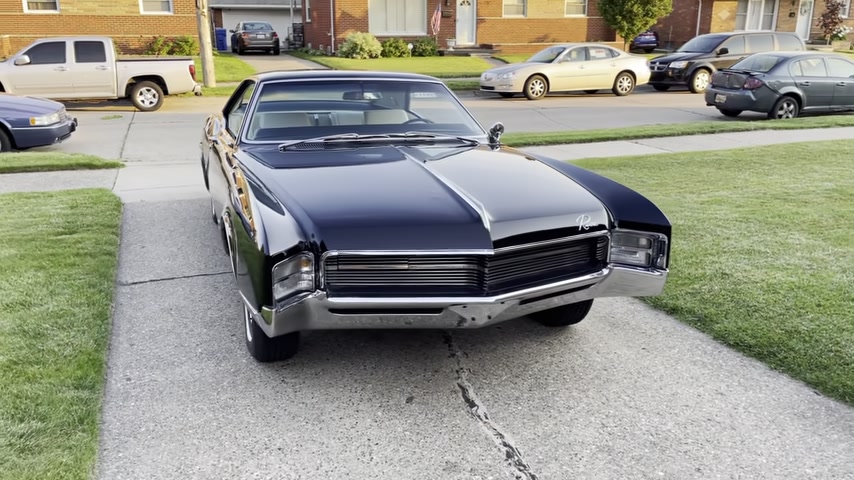
Hi , my name's Adam .
This is my classic car channel where you can see some vintage original rare cars today .
I'm gonna be spotlighting my 67 Riviera .
This is a factory black car with white bucket seat interior , so very rare combination , no vinyl roof either .
Um , the car still wears its original paint , original interior has about 45,000 miles on it .
And when a lot of people think of the Riviera , they often think of the first generation from 63 to 65 which is also a beautiful vehicle or the boat tail years from 71 to 73 .
And I think this second generation Riviera gets forgotten in the mix .
And yet to me , it's one of the most beautiful looking cars ever designed .
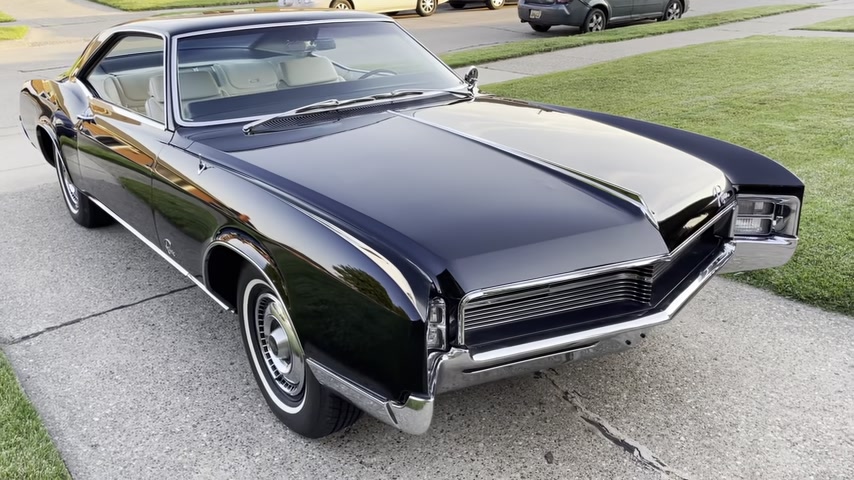
Um , you know , maybe worldwide , certainly in terms of American vehicles , I walk around , you can see the light just breaking on these various crease lines and just has some great lines on this car .
This vehicle was styled like this really for two years , 66 67 68 they redid the styling had a big front loop bumper really to kind of portray the air of safety from what I understand you had a big bumper made it look like it was very well protected .
But 66 67 Rivieras are generally quite similar .
Aside from a few details , the 67 has this horizontal theme with a thick bar in the middle of the grill that you can see here .
The 66 does not .
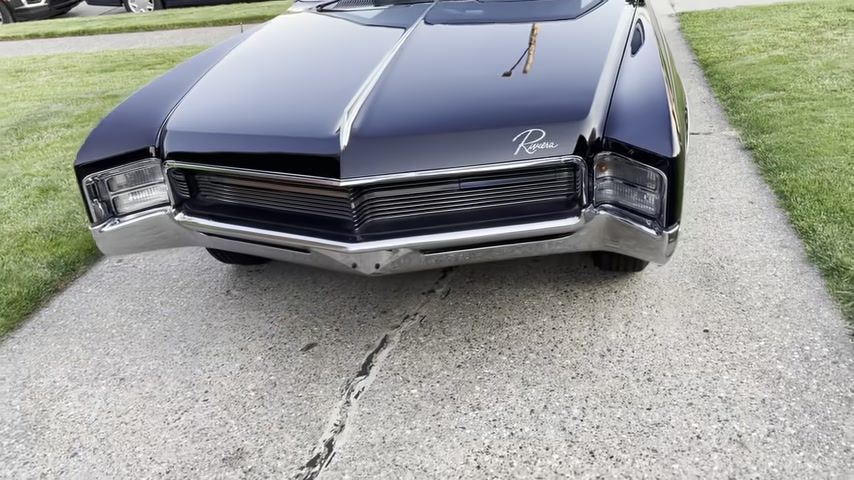
67 introduced this really nice Riviera script denoting the name plate and the 66 has block lettering that spells Riviera and block letters across the front .
And from a power train perspective , the 66 has the Buick nail head 4 , 25 cubic inch V eight .
This is the first year of Buick's then new 430 cubic inch V 84 barrel engine with a quadrajet carburetor .
So some power train differences , some badging differences , minor styling differences , but for all intents and purposes , the 66 7 are quite similar .
So here's the fucking seats , the interior will spend a bit more time on as the video goes on .
Yeah , this car has the standard wheel disk .
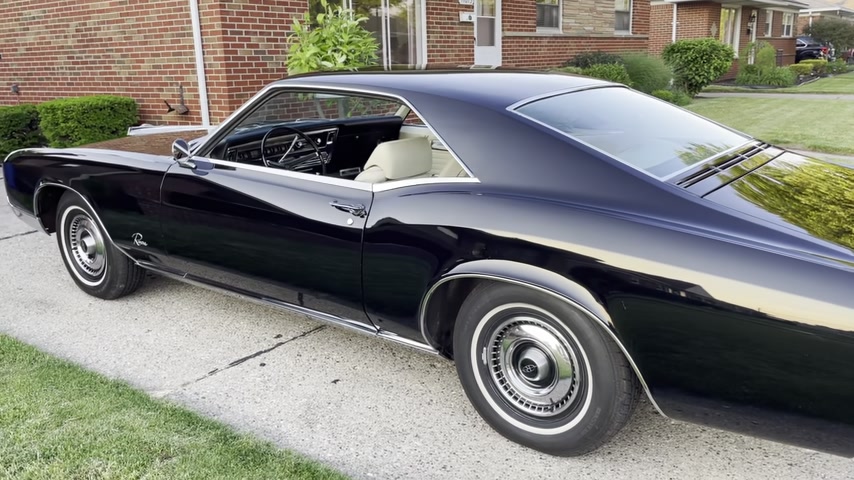
I do have a set of the turban veins , wheel disks which are actually interchangeable between the Riviera and the Corvette .
So if you've seen the Corvette , but those turban vein wheel disks , the Riviera used the exact same ones , just the centers would change out to have an R for Riviera as opposed to the Corvette checkered flags .
So this is a bucket seat car .
It also has the optional headrest .
The car doesn't have too many options .
It does have an AM radio .
It has a special order 2.73 to 1 rear end which is a taller rear end more for freeway gearing .
I think the standard was a 3.8 .
Yeah , has air conditioning and that's about it .
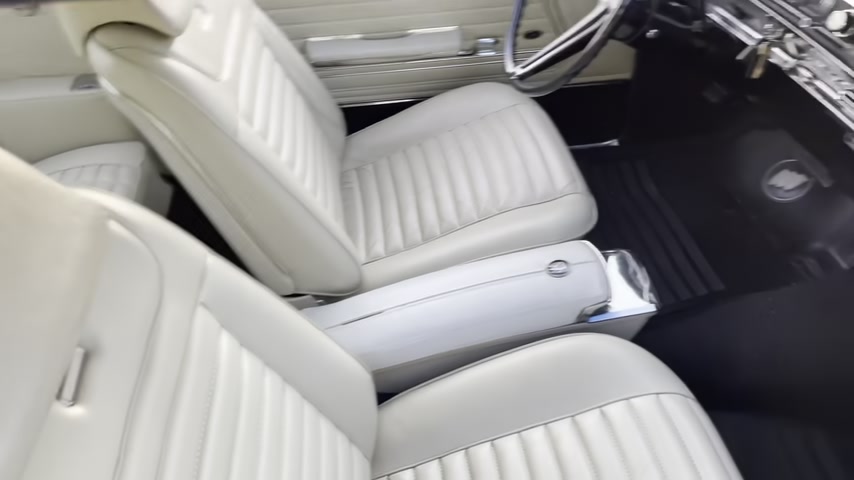
These cars came standard and the bucket seats , but the cars came standard with power steering , power brakes .
These are Buicks aluminum fin brakes on here , which are pretty remarkable .
So the outer brake drum is aluminum and it's got a cast iron liner on it , uh , where the shoes wear and this car stops fast .
These , these were really good brakes for the time .
Um , I never feel like in a panic stop situation that I have to worry .
Even most of the old drum brakes were just fine if you panic stopped once and they faded after two or three rapid applications .
This vehicle really just doesn't have any fade because aluminum dissipates the heat quickly .
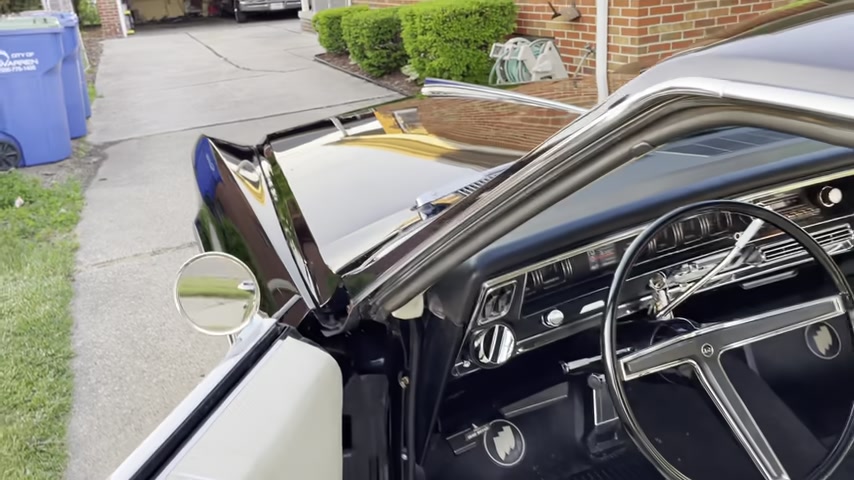
So turning to the inside of the vehicle , by the way , this is before the era where G M made doors that sagged and , um , kind of rattled when you close them .
This is a nice solid feel when you close it as opposed to the doors that came out starting in the early seventies on the full size cars in particular , but also the intermediates .
Yes .
A unique gauge cluster with this rolling drum speedometer similar to what the tornado had , but the tornado had a different IP different interior .
This is unique .
It's a little courtesy lamp there that you can see the H VAC controls .
This is interesting if you want the defrost , there's not really a position for defrost .
You just move this bottom lever to the right , this top one is the temperature and you can see recirculation , normal vent and heater .
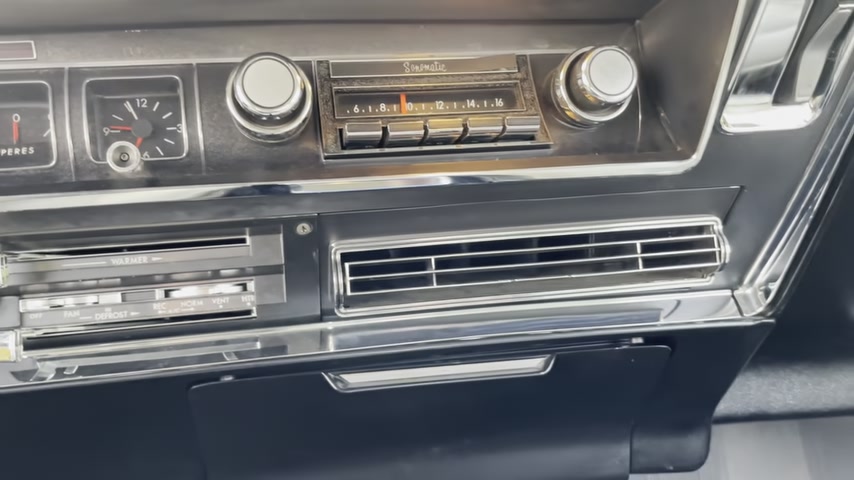
There are three outlets , this big center outlet and then one on either side , a very large ashtray in keeping with the time and some wiper controls and pretty full gauge pod for the era .
Most of these cars had idiot lights of this era and this one has a temperature gauge , oil pressure , a meter .
So overall nice gauge pod , interesting turn signals too .
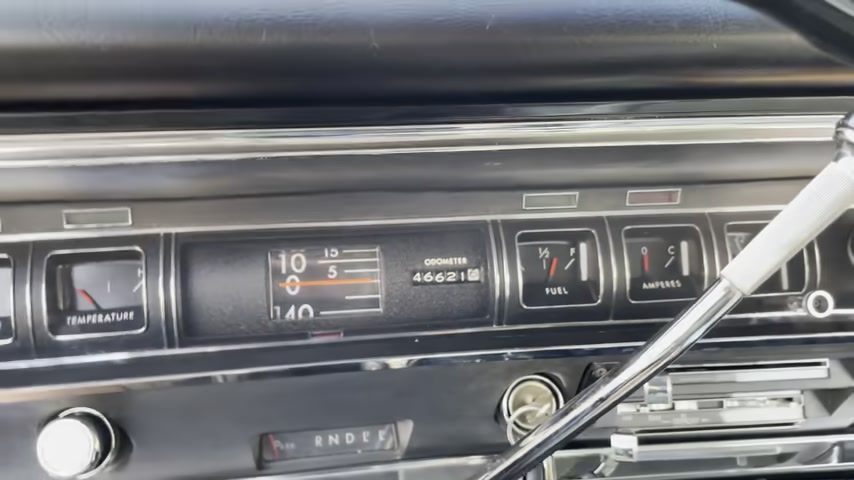
I'll turn the key on here and you can see right and the left , here's the center council so nicely trimmed inside latch is closed has the insignia with these little , I think the Reindeer , the Buick logo got a little less detailed in the latter years than what it was in these as kind of a perforated vinyl headliner , nice texture , no passenger rear view mirror you .
This is not the deluxe interior car .
So these door panels are the standard door panels .
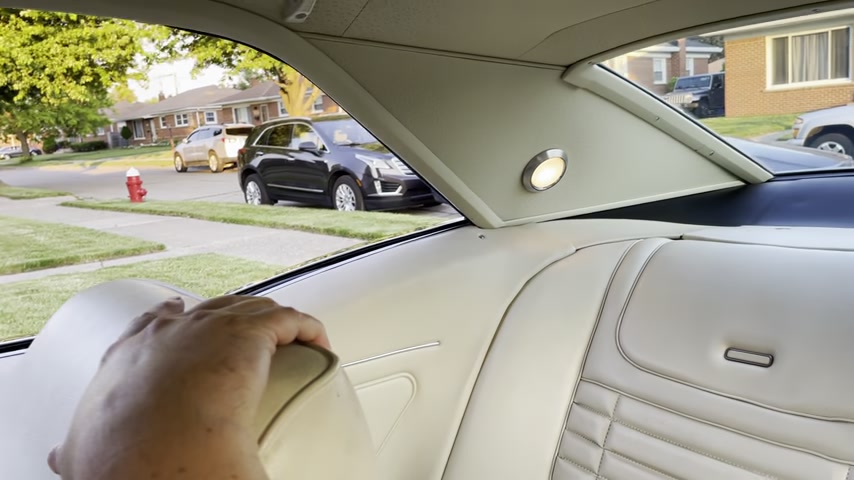
The deluxe interior had more of a chrome theme and you'll see that on some Rivieras , but this is the standard interior it's quite nice , all vinyl seeds , some lights in the sea pillar back there and a speaker in the middle .
If the car is so equipped , let's take a look under the hood for a moment .
So all original engine bay aside from somebody a long time ago added the seventies era spark control , whatever it is , capacitive discharge ignition system supposedly to make , I think your points more effective .
I've disconnected it .
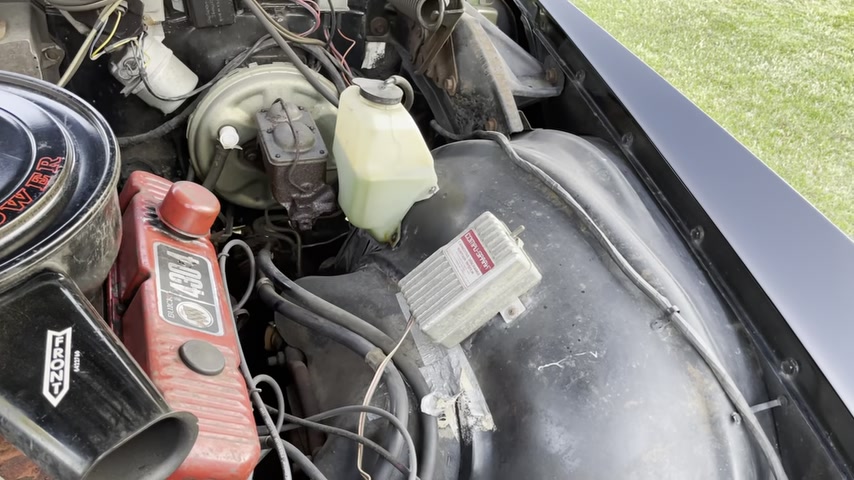
I didn't notice any difference , but I thought the box was pretty humorous there .
I do run all in my vehicle .
Somebody was asking , do I run stock points or electronic ignition ?
I run just the stock point set up in all my cars that have it .
I find that it's reliable .
I don't have any issues with it .
If I do start to have some issues , the car starts running bad as opposed to just dying and leaving me on the side of the road .
So I've had far more issues with electronic ignition over my lifetime than I have with points .
I've never been stranded by an ignition system with points .
I've been stranded three or four times by electronic ignition .
So my personal preference , this car does have what's called a switch pitch Turbo Hydrotic 400 transmission , which was made from 65 to 67 only .
And for those who aren't familiar , that's what this switch is here .
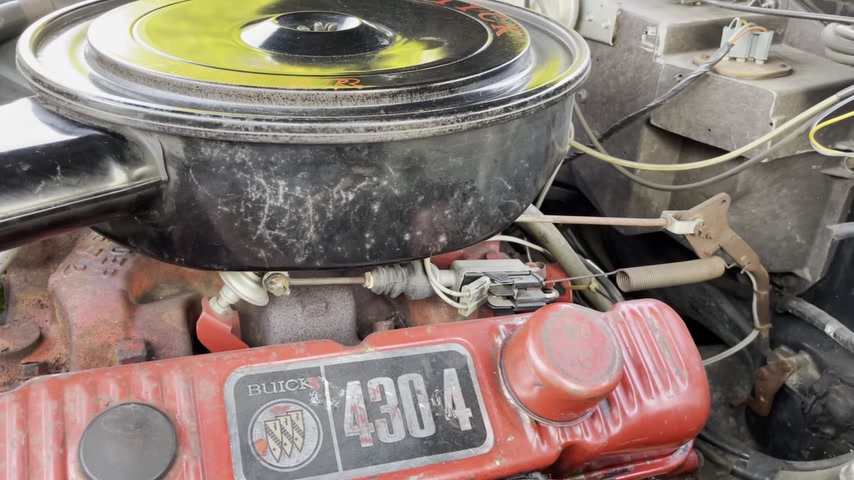
This is a kick down as well as a switch that activates the A variable speed , variable stall speed in the torque converter .
So if you're at a stop light , or if you step on the pedal more than about two thirds of the way , the stall speed and the transmission changes to a higher stall speed .
So you don't get idle creep when you're sitting at the stoplight and you get more power as the stall speed elevates .
So when you step in the car and you push the pal down about two thirds of the way .
It seems like it's a downshift , but it's actually not , it's a , it's just increasing the stall speed of the torque converter .
And then if you step further , it will kick down .
So only 65 to 7 only Turbo Hydrotic four hundreds and 425 S which is the front wheel drive transmission had that feature , which I think is stellar .
So very popular among racers .
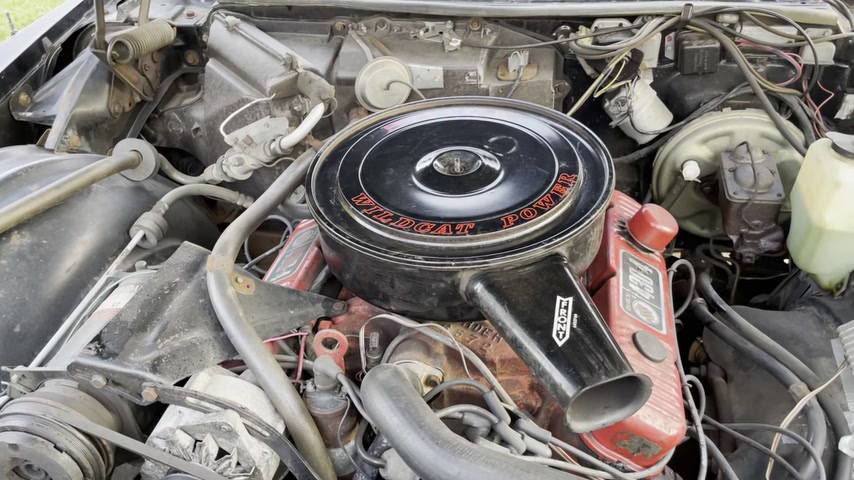
After that , they just went to a , I'll say an in between stall speed .
That was optimal .
Uh you know , across all ranges of throttles opposed to this two speed , uh variable pitch converter .
Yeah , Buick V eight s are for those who don't know in this era until about the mid to late seventies , every GM division engineered its own V eight .
So you could have a Chevrolet 350 Pontiac 350 Olds , 350 Buick 350 there was no Cadillac 350 but each of those divisions , their motors were 100% different .
Now , there were some shared components like distributors and carburetors and things like that .
But the physical design of the motor was different .
So that , to me is a special thing about the GM cars of this era is you get a totally different engine depending upon the vehicle that you're in .
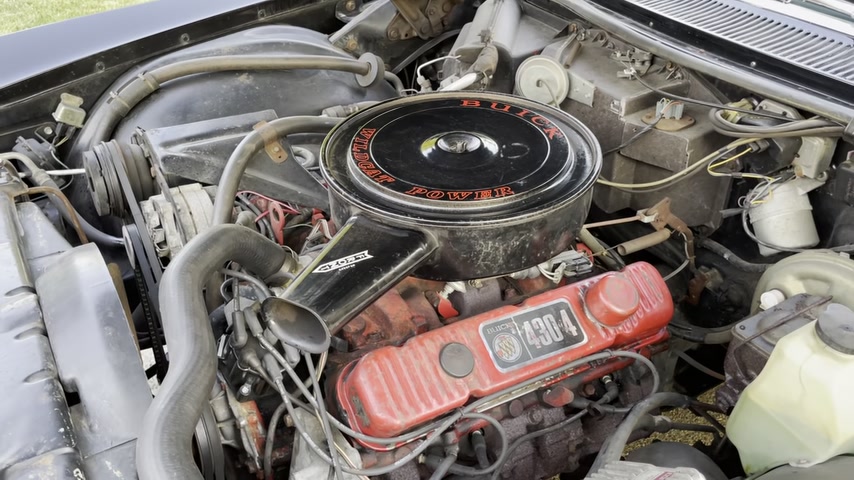
So this was Buick's first year of the 434 barrel carburetor motor .
And in 67 68 this motor doesn't have hollow push rods , which means that most V eights and most , I guess most push rod engines , if hollow push rods and the oil circulates up through the push rod to lubricate the Rocker arms .
This motor for the first two years does not have that .
So you want to make sure that when you start the vehicle that it runs quietly , there's no ticks or knocks because if the person who owned it didn't change the oil , the galley that would lubricate the upper portion of the valve train could clog and create some issues .
This motor is perfectly silent , thankfully , but I just thought that was an interesting piece of trivia .
These Buick V eights also have an aluminum timing cover and if you have to replace the water pump , they're known for the bolts breaking off .
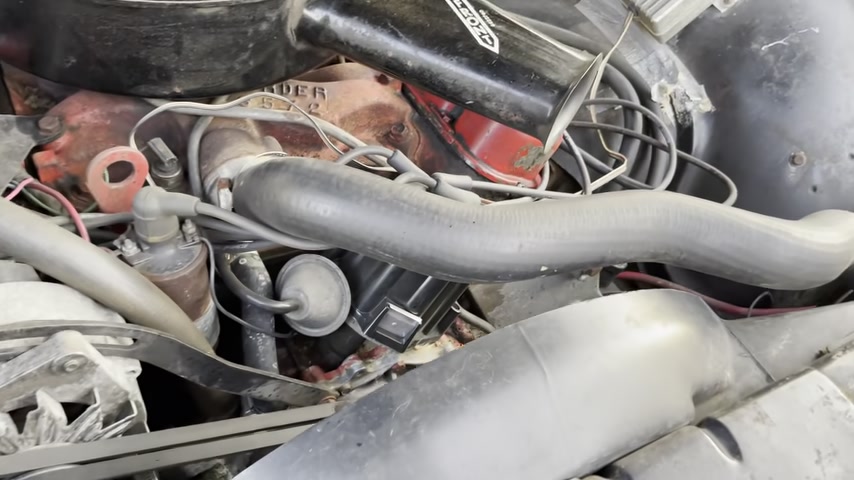
I highly recommend if you're going to have the water pump replaced , to go to a shop that has an induction heating tool that can heat the bolts up , which are ferris metal and it won't heat up the surrounding aluminum and risk warping it .
There's a tool that I have called the Venom mini ductor .
It's somewhat expensive but pretty valuable in cases like this .
If you want to change a water pump , you can't get a torch out here and heat the aluminum and everything else that's around it , that just provides a very localized heat on the bolts and allows you to get them out without breaking off .
So I found that very helpful .
This car still runs R 12 .
It is still frigidly cold .
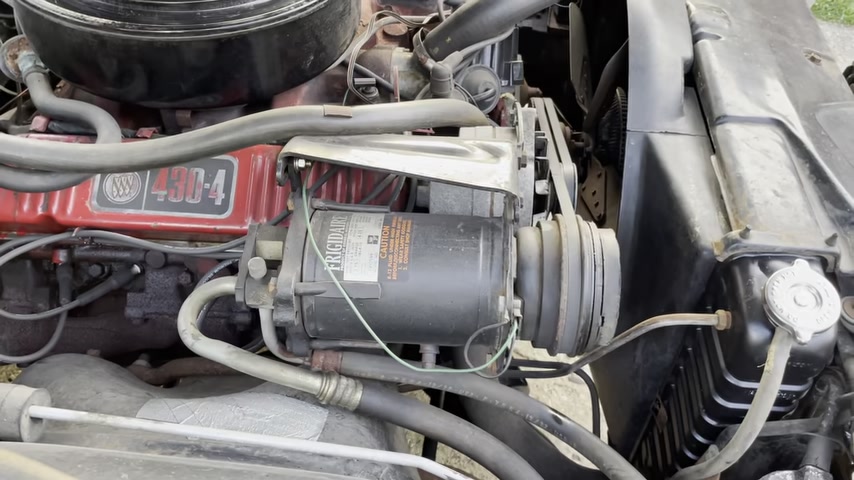
And as the name would say , frigid air back when General Motors used to own frigid air , this is a six piston GM compressor , an excellent system that was used up until the late seventies when they went to a radio style compressor , but there are six little pistons in here .
Three pointing this way , three , pointing that way that pump the refrigerant around .
And you can see that the charge here is for Riviera four and £4 of refrigerant .
If he had a Ford of this era that had the York two piston compressor , they run about two and three quarter pounds , 2.5 , 2 and three quarter pounds .
So I love my Fords .
Don't get me wrong .
All my Ford friends , but in my opinion , the GM air conditioning systems of this era were better .
They had way more cooling capacity .
I mean , this thing is a six piston compared to a two piston .
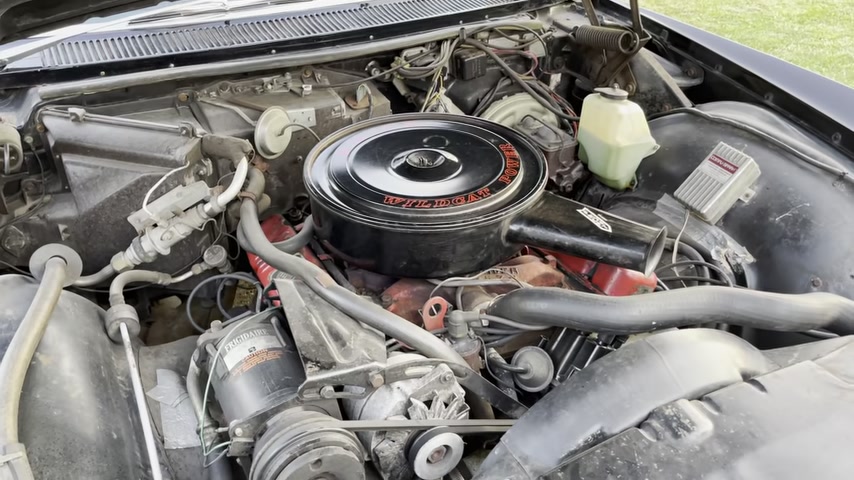
It's running four and £4 of refrigerant compared to 2.5 , 2.75 .
That's not to say that the Fords didn't cool .
They did .
You just were operating the air conditioning on high more than this does .
I mean , this car will freeze you out .
It was 90 degrees here today .
I was running around with the air conditioning on and I had it on just the medium fan setting .
It's a four speed fan and I had it on the second speed and I was just comfortable inside of a black car .
Whereas my Fords , I would have probably on high the whole time I was driving around .
This is the second year for the quadrajet four barrel excellent carburetor .
The only thing that I'm noticing is the ethanol fuel gets into a lot of the gasoline .
Now , the accelerator pumps tend to go bad and the trophy floats may get stuck and flood out and you can have some typical needle problems .
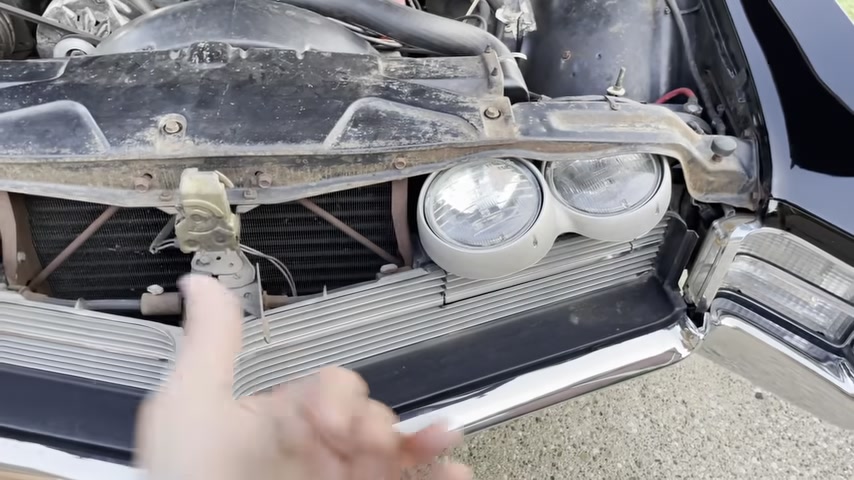
But generally these are very , very reliable , great power from the car operators too .
You can see how the headlight system on this car operates .
They rotate downward when you turn the headlights on and it's an electric motor .
So I'll show you turn it on here and you can watch so they rotate downward and they actually look really good down as well .
As up .
So a lot of the non GM cars of the era , the headlights .
So when you turn the lights off and keep the doors down , so you can see these headlights look pretty unfinished , but this has a nice look to it even when the headlights are down .
Yeah .
Yeah .
This little spear went away in 68 for safety .
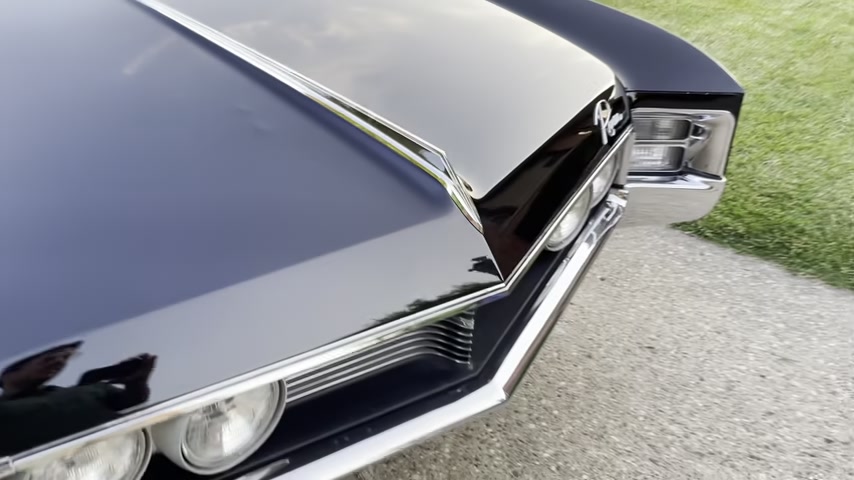
I would hate to hate to be bumped by this car .
There's a passerby , uh , that would , this is not dull .
So the tip of that spear went away for safety in later years , but it sure looks good .
Let's go take a look at the trunk .
Yes .
Car doesn't have a really large trunk does have the ventilation that flow through ventilation there that you'll see some rubber hoses , the water collects and then runs down inside the rear fender wells .
General jack , a decent amount of space .
I mean , you could fit several sets of golf clubs in here .
It's just not very tall overall .
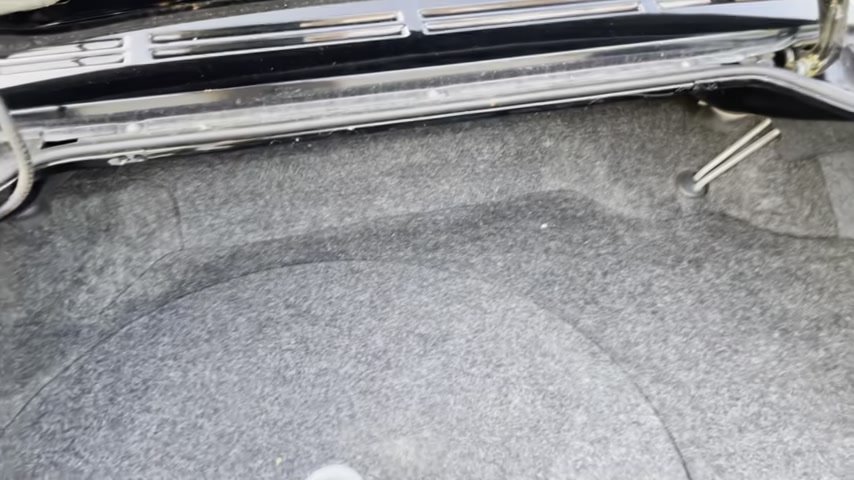
I but not huge , not small .
This is the spare tire .
Well , so you can see spare tire in here .
Double striped bias belted tire .
So the Riviera was one of three kind of a trio of vehicles .
The El Dorado , the tornado and the Riviera were similar vehicles .
The tornado and the El Dorado were front wheel drive .
The Riviera was rear wheel drive and the tornado and El Dorado both had three quarter frames , a stop really ahead of the rear wheel and the rear wheel , the suspension is a mono leaf spring on either side .
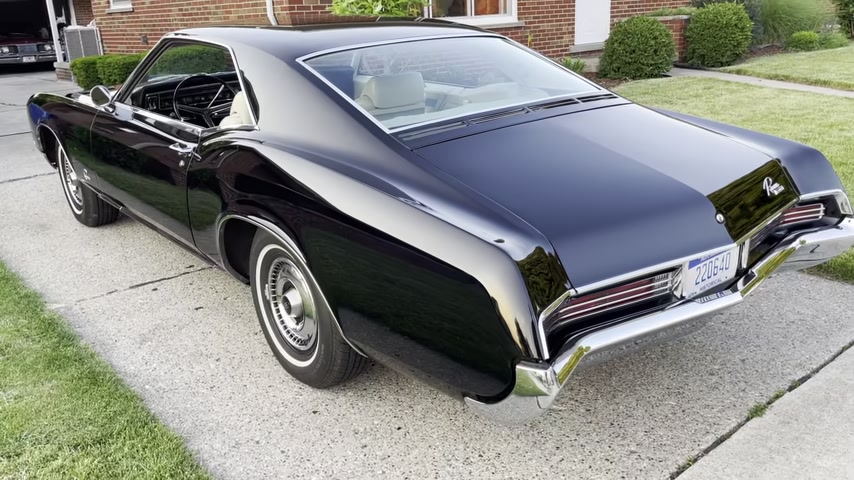
The Riviera has full coils on all four corners and it has a full X frame .
So I own an El Dorado .
I've driven a tornado .
I will just say the Riviera rides much , much better than the Toro and the Eldo , which really don't have a great ride and it's pretty boom inside that mono leaf for your spring is not something that really to brag about .
I think it degrades the riding characteristics of the car .
Certainly compared to this car , like I said , that has full coils .
They sold around 40,000 of these Rivieras in 1967 .
So it was a popular car and you could see why , I mean , it's hard to understand if somebody went to the showroom and test drove this car in 1967 what they would pick at if you were looking for a personal luxury car , the car is smooth .
It's quiet .
It's good looking .
I can't imagine somebody saying , gosh , this car is too smooth , too quiet , too good looking .
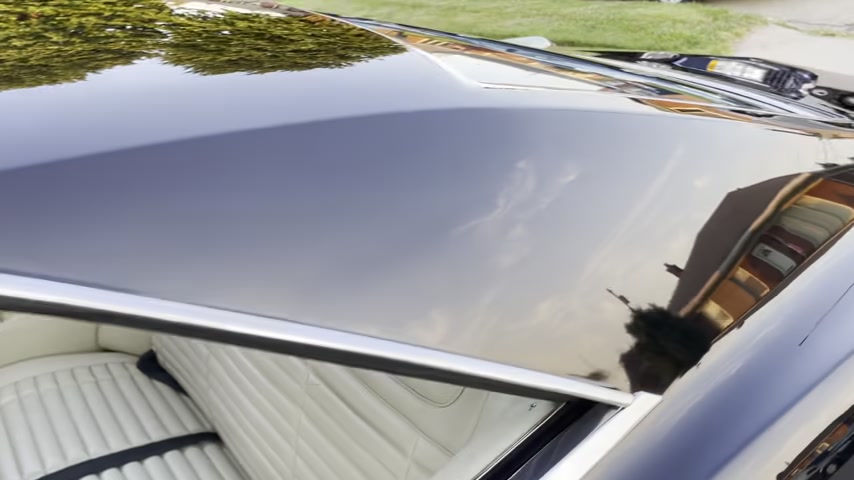
I don't want it and just really nicely detailed all around .
So let's take it for a brief drive here , I'll start it up and you can hear the exhaust .
I've got factory style dual exhaust with resonators on this , which is what would have come on it .
That noise is just the headlight doors closing .
All right , let's take it for a spin .
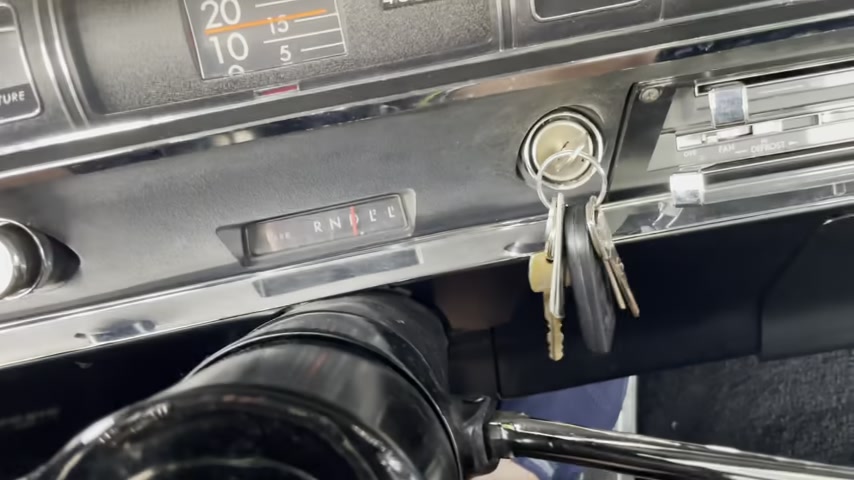
Mm .
So this motor was 360 or 65 horsepower .
I'm not quite remembering how much , to be honest .
One of the two , but it's very powerful .
Very peppy , no lack of power .
I mean , this thing just pulls like a freight train and it's got quite a bit of top end power too .
For a big motor .
It revs , it likes to rev , I had a 70 Electra with a 455 .
And surprisingly that one liked to rev too that came , stuck with a 256 gear end .
And I remember that thing would kick down to second gear at 70 miles an hour and hold second gear to 90 .
I think first gear went to 50 .
So pretty amazing .
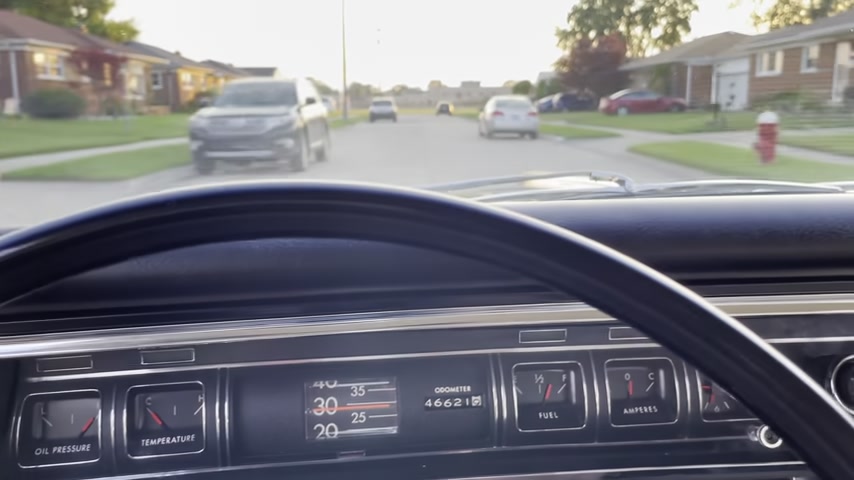
You can see this rolling drum speedometer here , but just the joy to drive .
Everything that I featured so far has been a Ford vehicle which I loved my Fords .
Late sixties , early seventies .
I do love the G MS as well .
I have a few more powers but some of the GM SS to me before 71 kind of in that 65 to 70 range are really special , especially 65 6 and 7 , 68 9 70 .
They started decon the interiors and thinking them look not as nice so they're not , not as nice as these earlier ones , but the motors and the transmissions are just beautifully smooth .
The C six S and the Fords are great transmissions .
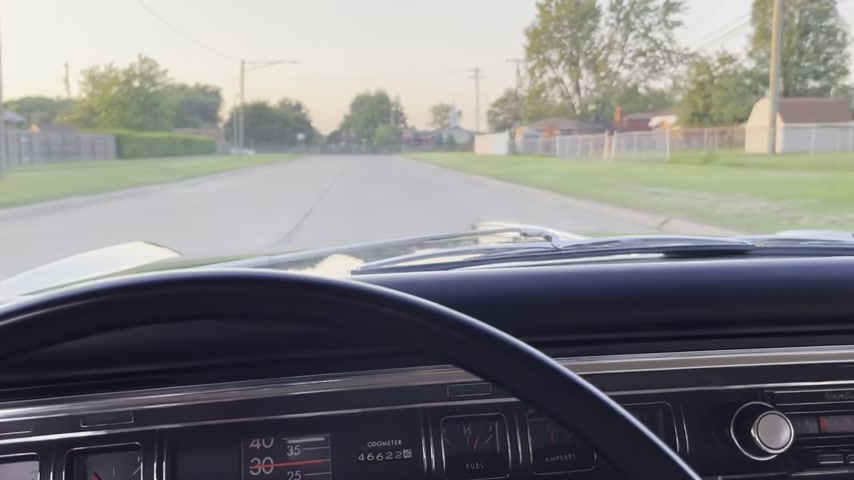
They don't shift as smoothly as these turbo hydro matics do .
Or the 7 27 Chryslers , you feel the shifts in any Ford transmission I've had in the air with , it's AC six C four FM .
I've had many versions of all of them and you definitely feel the shifts in them .
It's hard to detect sometimes when it's shifted and it just buttery smooth .
Here we go .
That was about two thirds throttle .
This car really could get up and move quite well .
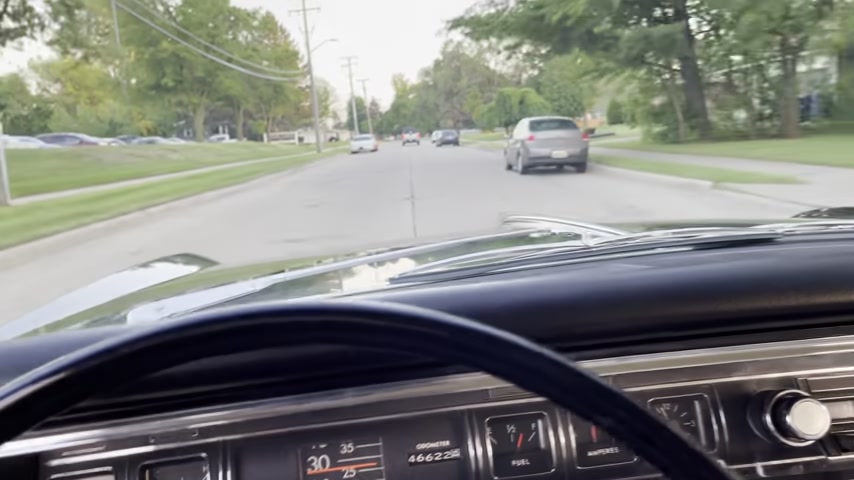
Again , compared to the El Dorado and tornado counterparts , the Riviera , I think has a lot better ride the engines across all three are different , but I would say all excellent .
The transmissions are similar .
The Turbo Hydrotic 425 is effectively a 400 that was split in half after the torque converter and has about an inch thick chain drive that drives the transmission and a final drive to drive the front wheels .
Which interestingly was that , that system , the Oldsmobile V eight with that transmission was used almost unaltered in the GMC motor homes in the 70 S .
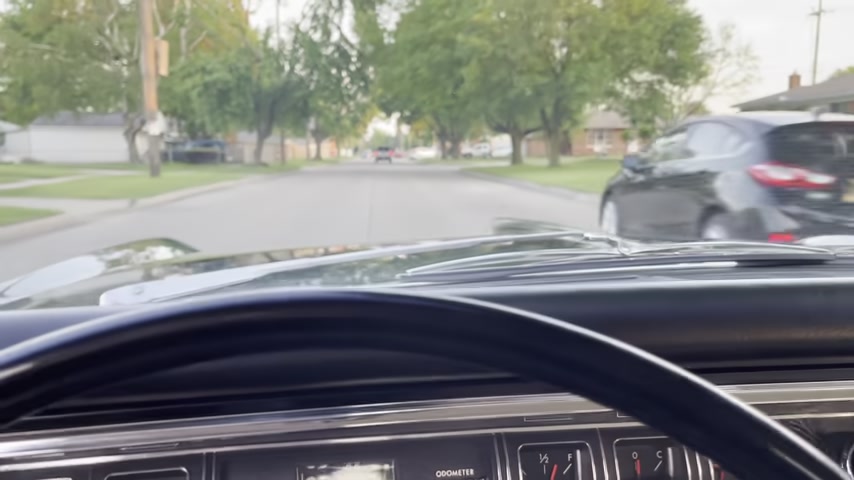
So it was super over engineered for passenger car application but very , very durable in any case .
Hope you enjoy this video of my 67 Riviera .
You like the video , please subscribe to my youtube channel and I'll continue making more .
Hope you enjoyed it .
One last look around the interior .
Here's a little light switch to turn the light on if you want .
That's it , it's along everybody .
Are you looking for a way to reach a wider audience and get more views on your videos?
Our innovative video to text transcribing service can help you do just that.
We provide accurate transcriptions of your videos along with visual content that will help you attract new viewers and keep them engaged. Plus, our data analytics and ad campaign tools can help you monetize your content and maximize your revenue.
Let's partner up and take your video content to the next level!
Contact us today to learn more.